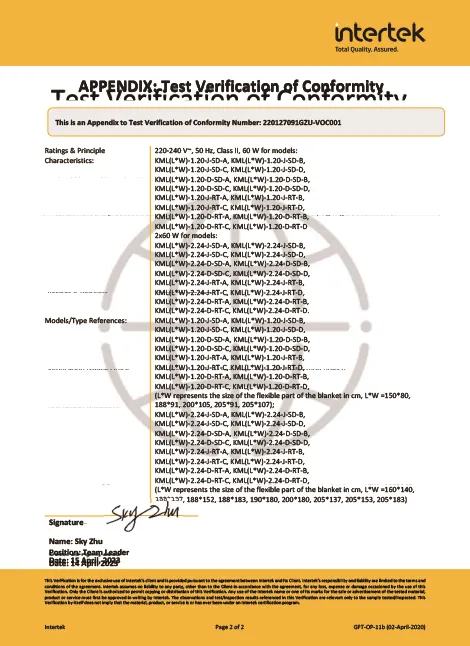
Dec . 05, 2024 14:58 Back to list
electric blanket running cost
Understanding the Running Costs of Electric Blankets
As the cold winter months approach, many people turn to electric blankets for warmth and comfort. An electric blanket can not only provide relief from frigid temperatures but also contribute to a cozy night’s sleep. However, many people wonder about the running costs associated with using electric blankets. Understanding these costs is essential for making informed decisions and managing household budgets effectively.
How Do Electric Blankets Work?
Electric blankets are equipped with insulated wiring that produces heat when electricity passes through it. They typically come with adjustable heat settings, allowing users to customize their temperatures according to personal comfort preferences. These blankets can be used on beds, couches, or any other area where warmth is desired.
Calculating Running Costs
To accurately assess the running costs of electric blankets, several factors come into play, including wattage, usage duration, electricity rates, and blanket settings.
1. Wattage Electric blankets usually have wattage ratings ranging from 60 to 150 watts, depending on the model and size. For instance, a dual-size electric blanket may have a higher wattage rating than a single-size blanket.
2. Usage Duration How long you use the blanket each night significantly affects its running costs. If you use an electric blanket for an average of 8 hours per night, you’ll need to calculate the energy consumption over that time.
3. Electricity Rates Electric rates vary by region and provider, typically expressed in cents per kilowatt-hour (kWh). It’s essential to check your local utility provider for the current rate.
4. Settings Most electric blankets offer multiple heat settings (low, medium, high), which can affect their power consumption. Generally, higher settings consume more energy.
Example Calculation
Let's assume you have an electric blanket with a wattage of 100 watts and you plan to use it for 8 hours each night
. First, convert the wattage to kilowatts\[ \text{Wattage (in kW)} = \frac{100 \text{ watts}}{1000} = 0.1 \text{ kW} \]
electric blanket running cost

Next, calculate the daily energy consumption
\[ \text{Daily Energy Consumption (in kWh)} = \text{Wattage (in kW)} \times \text{Hours of Use} = 0.1 \text{ kW} \times 8 \text{ hours} = 0.8 \text{ kWh} \]
If your local electricity rate is $0.12 per kWh, your daily running cost would be
\[ \text{Daily Cost} = \text{Daily Energy Consumption} \times \text{Electricity Rate} \] \[ \text{Daily Cost} = 0.8 \text{ kWh} \times \$0.12 \text{/kWh} = \$0.096 \]
If you use the blanket every night for a month, the monthly running cost would be
\[ \text{Monthly Cost} = \text{Daily Cost} \times 30 \text{ days} \] \[ \text{Monthly Cost} = \$0.096 \times 30 = \$2.88 \]
Energy-Saving Tips
To minimize the running costs of your electric blanket, consider the following tips
- Use a Timer Utilize a timer or thermostat to automatically turn off the blanket after a set period, ensuring you only use it when necessary. - Opt for Low Settings Use the low setting for maintenance heat and combine it with additional blankets for added warmth.
- Layer Additional Blankets Adding regular blankets on top of your electric blanket can help retain heat, allowing you to lower the electric blanket’s setting.
Conclusion
In conclusion, electric blankets can be an affordable solution for staying warm during winter, especially when their running costs are understood and managed correctly. By considering factors such as wattage, duration, settings, and local electricity rates, you can make informed choices that enhance your comfort without breaking the bank.
-
Innovations and Applications of Modern Electric Heating Blankets
Jul.07,2025
-
Innovations and Applications of Electric Fleece Blanket Systems
Jul.07,2025
-
Functional and Cozy Solutions for Personalized Warmth
Jul.07,2025
-
Essential Comfort and Warmth Solutions: Heated Blanket Variants
Jul.07,2025
-
Enhancing Coziness with Warmth - Centric Blanket Solutions
Jul.07,2025
-
Enhancing Comfort and Warmth: Electric Blanket Solutions
Jul.07,2025
Realted Products



